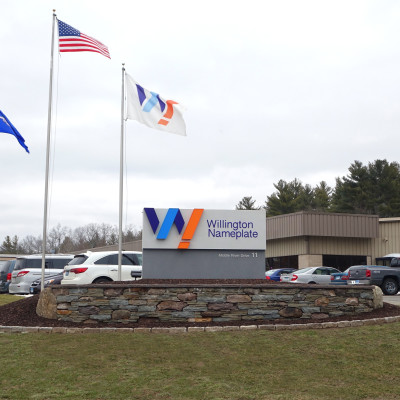Family-owned manufacturer confident in long-term viability of metal plate industry
STAFFORD SPRNGS, CONN—Willington Nameplate has grown by more than a third in the past five years during which the manufacturer acquired three fellow second-generation family businesses.
In March of 2011, Willington Nameplate acquired Decorated Products of Westfield, Massachusetts, followed by UID Label & Beyond in late 2012, and Photopanels of New England in early 2013, both of Princeton, Mass. Like Willington Nameplate, each of these companies was a second-generation family business.
The three acquisitions were an aggressive strategy for the company which makes metal plates and tags and is currently celebrating its 50th anniversary year. The additions helped Willington Nameplate invest and expand their technology and expertise with processes such as Metalphoto®, which enables highly detailed and durable printing for manufacturers in aerospace, defense, and more.
“It’s a slow-growth business,” says President Mike Goepfert, whose father, Marcel Goepfert, founded Willington Nameplate. “But I know the odds on family businesses. Only about 10 percent make it to a third generation. To ensure our future, we needed to do more than survive, and these acquisitions enabled the most rapid period of growth and investments in our history.”
Willington Nameplate extended job offers to all of the employees of the companies it acquired, and integrated its new team members into an open work environment. “The culture here is very different,” says former Decorated Products employee Donna Marek. “The company shares key performance indicators with all employees, so we can see how what we do supports the company health as a whole.”
“Our workplace culture continues to foster the entrepreneurial spirit its founder established. When you add that to technology investments, rapid growth is the result,” says General Manager Brett Greene. “Willington Nameplate has a long future ahead. I don’t see the need disappearing for plates that instruct, inform, and caution users of products, particularly specialized plates, such as those that withstand harsh environments.”
In fact, the metal nameplate—which dates back to the 1880s—seems to be an example of what economists call the Lindy Effect. As scholar and best-selling author Nassim Taleb states in his book, “Antifragile,” on average, “the longer a technology lives, the longer it can be expected to live.” It appears the same can be true of a company that is the steward of its own future.

